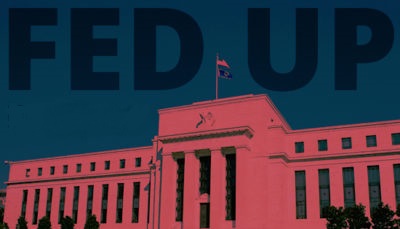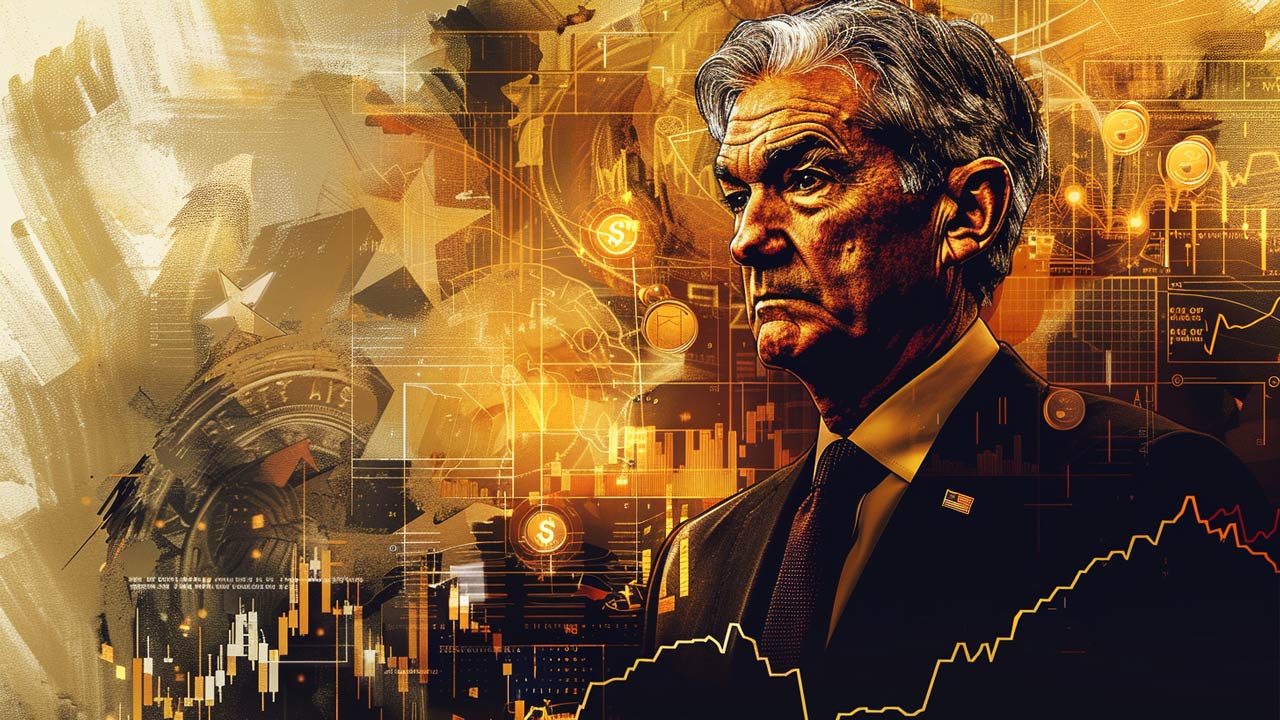Fed Considering Using Quantitative Easing “More Readily”
Once upon a time, quantitative easing was considered an “extreme measure.” But it may become more commonplace. According to a Reuters report, central bankers in the US are discussing whether they should turn to that “tool” more often.
In other words, the Fed may make the “extreme” the norm.
Last Friday, San Francisco Federal Reserve Bank President Mary Daly said they were discussing whether QE bond-buying should be an emergency measure only, or if the central bank should use the tool more regularly.
In the financial crisis, in the aftermath of that when we were trying to help the economy, we engaged in these quantitative easing policies, and an important question is, should those always be in the tool kit — should you always have those at your ready — or should you think about those are only tools you use when you really hit the zero lower bound and you have no other things you can do.”
She went on to say she could envision a scenario where interest rate cuts were the primary tool and expanding the Fed’s balance sheet was a secondary tool, “but one that you would use more readily.”
That’s not decided yet, but it’s part of what we are discussing now.”
As one cynical poster on Twitter described the potential new policy this way.
The year is 2021. The Fed institutes QE every time the S&P drops 50bps.”
Cynical, but not necessarily wrong.
As Peter Schiff said in a recent podcast, the only thing that’s changed in recent weeks to justify the “Powell Pause” in rate hikes is the drop in the stock market.
Now here we are just a few months later. Nothing has actually changed with the overall economy. Yes, we had a government shutdown; the government shutdown is over. Not that big a deal. I mean, there has been weak economic data, but there’s been weak economic data that the Fed has been ignoring the entire time … The only thing that’s really changed between the September meeting and today is a bear market in stocks. The bear market that happened in the fourth quarter of last year and the acceleration of the downtrend that accompanied the last rate hike the Fed delivered in December. That’s the only substantive difference between now and then. And that’s the only reason the Federal Reserve has done a complete 180 when it comes to monetary policy.”
In effect, QE is a fancy term for printing lots of money. The Fed uses these newly minted greenbacks to buy securities or government bonds, thereby putting the new cash directly into circulation. The Fed can buy US Treasuries, thereby monetizing government debt. It can also buy things like mortgage-backed securities as it did during QE1, allowing big banks to remove these worthless assets from their balance sheets. The Fed hoped this would encourage the banks to lend out money again and ease the credit crunch.
In the wake of the 2008 financial crisis, the Fed quickly pushed interest rates down to zero. With that gun empty, it began quantitative easing. Over a span of nearly seven years, the Fed’s balance sheet increased 427%. According to a MarketSlant article, the central bank did $3,625 billion of QE. You can learn more about the mechanism of QE HERE.
Not so long ago, using QE was considered a radical policy. It was a strong drug necessary in the moment. But today, the economy is addicted to easy money. And like every drug user, it needs a bigger and bigger fix to get the same “high.” We’ve seen what happens when the pusher tries to wean the addict off the drug in recent months.
The Fed began the balance sheet roll-off in October 2017. At that point, it had grown to $4.5 trillion after three rounds of quantitative easing.
The Federal Reserve hasn’t actually been selling off bonds. It has simply allowed the proceeds from mature bonds to roll off instead of reinvesting them. According to CNBC, “The maximum roll-off is $50 billion a month, though it is rarely if ever reached — December saw about a $34 billion reduction in the Treasurys and mortgage-backed securities that are involved in the program.”
The Fed has reportedly shrunk its balance sheet by about $400 billion. That sounds like a lot until you put it in the context of $4.5 trillion. The markets have not responded well even to this modest tightening. As CNBC put it, “While Fed officials initially thought the balance sheet reduction could be done with little disturbance to markets, that hasn’t been the case.”
Peter has been saying we can expect rates to go back to zero and another round of QE in the near future. A lot of naysayers dismissed Peter, saying the Fed wouldn’t do such a thing unless there was another extreme crisis. Of course, the stage is set for another extreme crisis. But even if that doesn’t immediately come to pass, it looks like the Fed may well be pretty quick to pull the QE tool out of the toolbox.
Get Peter Schiff’s most important Gold headlines once per week – click here – for a free subscription to his exclusive weekly email updates.
Interested in learning how to buy gold and buy silver?
Call 1-888-GOLD-160 and speak with a Precious Metals Specialist today!





 Since Nayib Bukele became president of El Salvador, El Salvador has been in American media and global political discussion more than ever. While much of the attention focuses on Bukele’s mass incarceration of gang members and a decline in homicide of over 70%, Bukele has also drawn attention to his favoritism towards Bitcoin and how he […]
Since Nayib Bukele became president of El Salvador, El Salvador has been in American media and global political discussion more than ever. While much of the attention focuses on Bukele’s mass incarceration of gang members and a decline in homicide of over 70%, Bukele has also drawn attention to his favoritism towards Bitcoin and how he […] With gold hitting yet another awe-inspiring all-time high in the wake of Powell’s remarks reassuring markets (more or less) to expect rate cuts in 2024, a few analysts are pointing out risk factors for a correction — so is there really still room to run?
With gold hitting yet another awe-inspiring all-time high in the wake of Powell’s remarks reassuring markets (more or less) to expect rate cuts in 2024, a few analysts are pointing out risk factors for a correction — so is there really still room to run? Gold hit a new all-time nominal high, surpassing the previous record set in December of the previous year. The precious metal’s price reached approximately $2,140, indicating a robust and continuing interest in gold as a safe-haven asset, despite a rather peculiar lack of fanfare from the media and retail investors. This latest peak in gold […]
Gold hit a new all-time nominal high, surpassing the previous record set in December of the previous year. The precious metal’s price reached approximately $2,140, indicating a robust and continuing interest in gold as a safe-haven asset, despite a rather peculiar lack of fanfare from the media and retail investors. This latest peak in gold […] The gold price has been surging, with unprecedented central bank demand gobbling up supply. It has been a force to behold — especially as US monetary policy has been relatively tight since 2022, and 10-year Treasury yields have rocketed up, which generally puts firm downward pressure on gold against USD.
The gold price has been surging, with unprecedented central bank demand gobbling up supply. It has been a force to behold — especially as US monetary policy has been relatively tight since 2022, and 10-year Treasury yields have rocketed up, which generally puts firm downward pressure on gold against USD.  Total gold demand hit an all-time high in 2023, according to a recent report released by the World Gold Council. Last week, the World Gold Council (WGC) released its Gold Demand Trends report, which tracks developments in the demand for and use of gold around the world. Excluding over-the-counter (OTC) trade, 2023 gold demand fell slightly from 2022 […]
Total gold demand hit an all-time high in 2023, according to a recent report released by the World Gold Council. Last week, the World Gold Council (WGC) released its Gold Demand Trends report, which tracks developments in the demand for and use of gold around the world. Excluding over-the-counter (OTC) trade, 2023 gold demand fell slightly from 2022 […]